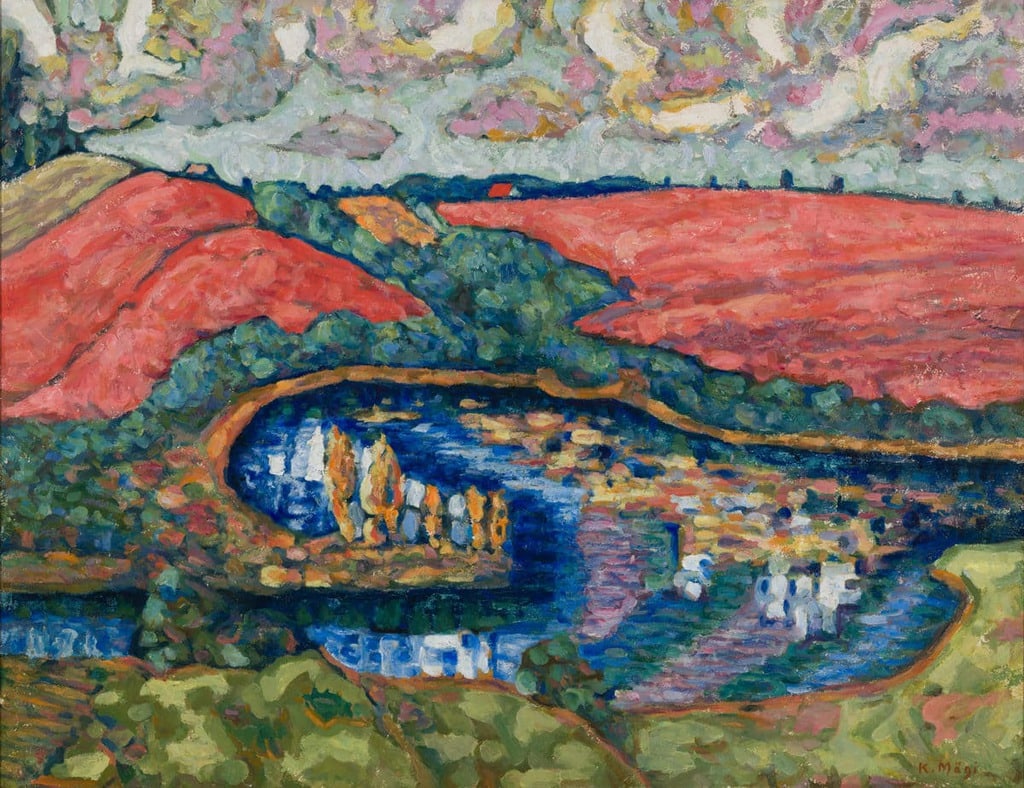
The work depicts Lake Uueveski in the northern part of Viljandi and hills on the far side. The peculiar shape of the lake and the landscape forms in an area known as Peetrimõisa match what is depicted in the painting.
The reddish or pinkish colour of the fields is noteworthy and has various explanations.
The Viljandi area does have clayey fields that appear reddish-brown. But these could also be, say, buckwheat fields in bloom. This species flowers from late June to the end of July, which would be helpful for dating the painting’s completion, but the explanation itself is dubious. Buckwheat cultivation was not very common back then and the means of depiction is more suggestive of earth than a field of grain. The reddish tone may be a ripe grain field or a field of stubble, but for this to be the case, the sky should be ruddy as well and reflect light on to the ground.
According to analysis by Toomas Kukk, these may in fact be poppies.
For Konrad Mägi, reddish fields mainly satisfied his hunger for drama, as they leave an expressive and emotional impression. Mägi dramatizes the real here, his fantasy and vision impelled by the actual landscape, this being his typical painting strategy until the second half of the 1910s, at which point his own imaginative powers started trumping reality.